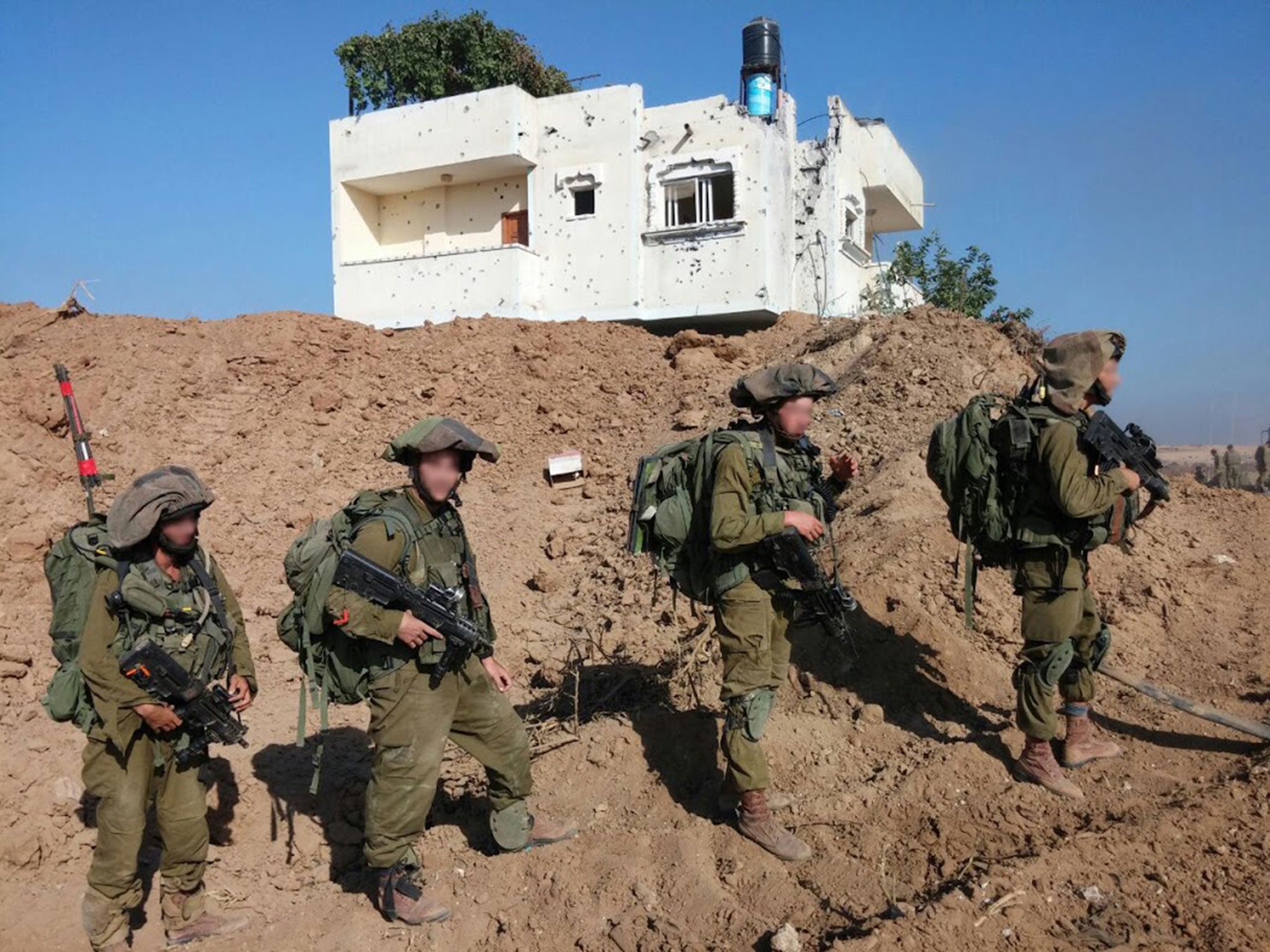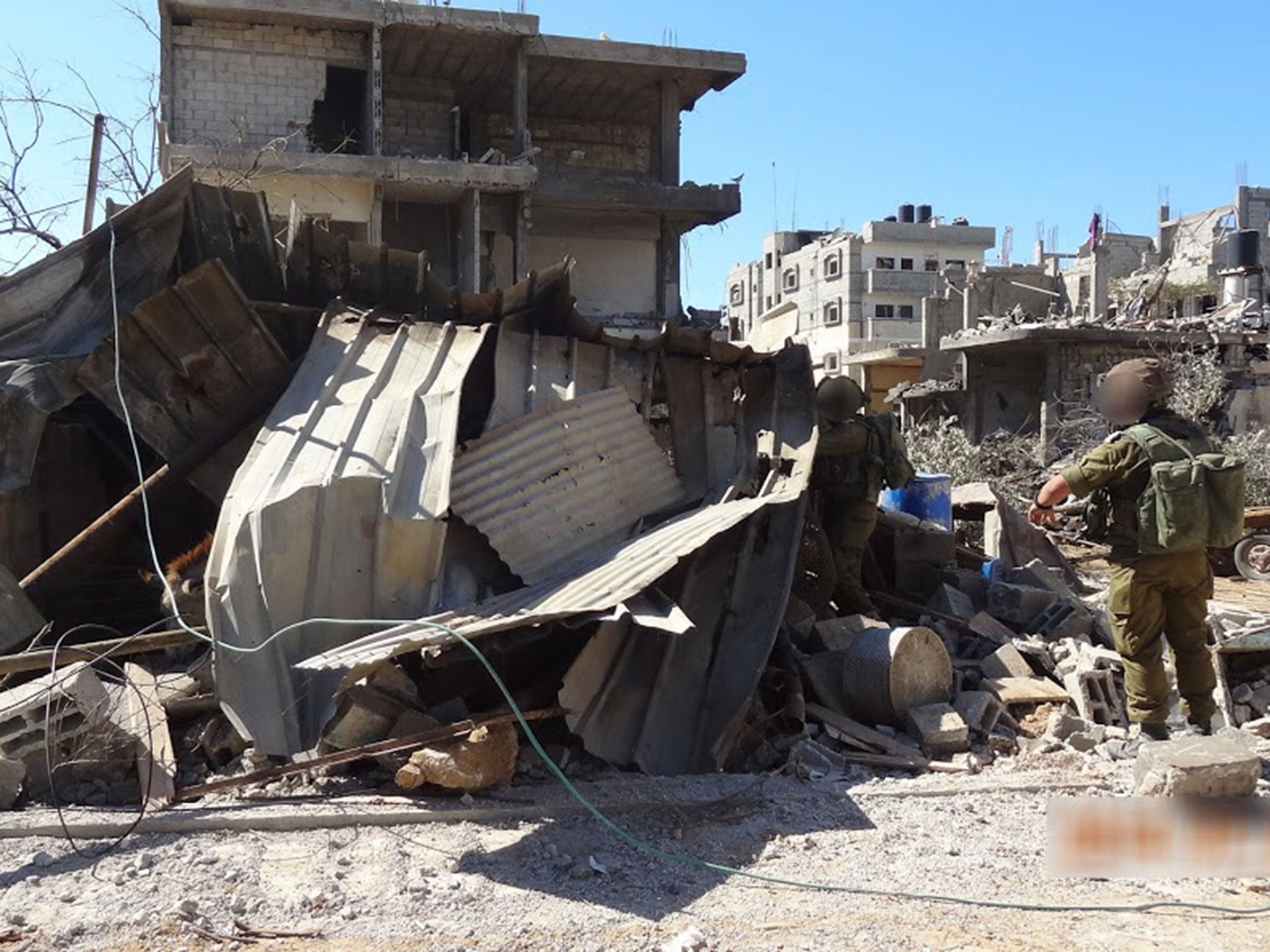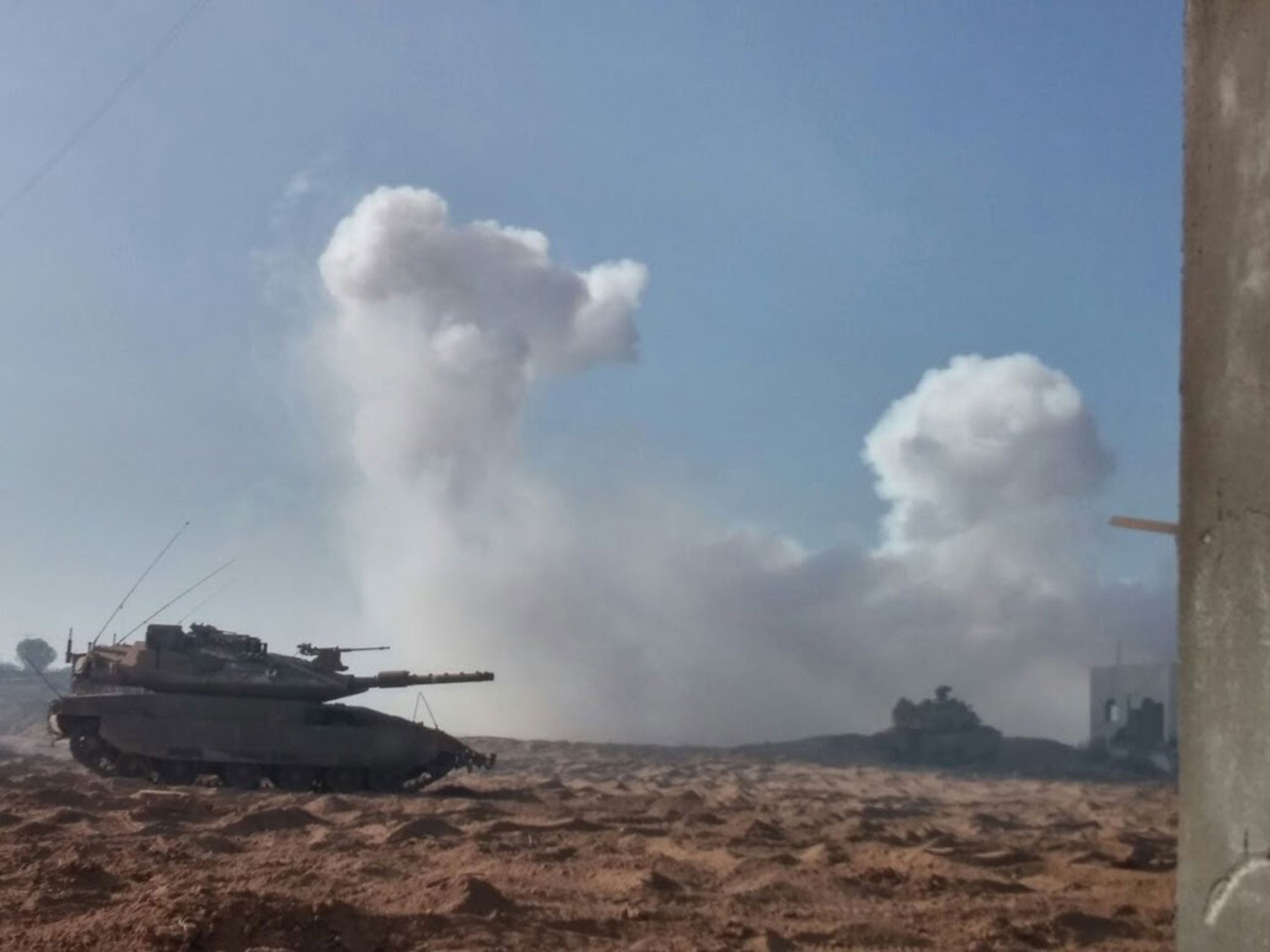'From what we knew, that area was supposedly devoid of civilians': The testimonies of Israeli soldiers provided to Breaking the Silence
Breaking the Silence claims many of the deaths in last summer's war in Gaza were preventable, and were the result of Israeli military policies

Last summer’s war in Gaza claimed the lives of at least 2,293 people, these include Israeli and Palestinian civilians, and those fighting in the Palestinian enclave.
Breaking the Silence claims that many of these deaths were preventable, and were the result of Israeli military policies, which, “led to massive and unprecedented harm to the population and the civilian infrastructure in the Gaza Strip.”
Speaking to more than 60 military personnel, the group says that, “the testimonies underwent a meticulous investigation process to ensure their veracity.”
The group also rejected what a number of soldiers told them, after it was unable to find supporting evidence to substantiate the claims.
Eight months after the end of the latest war between Israel and Palestinian militants in Gaza, largely loyal to Hamas, Breaking the Silence has produced a book running to 240 pages, which, it says, provides proof that the Israeli military’s version of its conduct during Operation Protective Edge, runs counter to the experiences of some of its soldiers.
There are more than 100 testimonies, provided by private soldiers and officers. They can be viewed in full here.
Here is a selection of them.

Unit: Infantry
Location: Northern Gaza Strip
Rank: First Sergeant
“Look, we’re going to put on a show”
There was a humanitarian ceasefire that went into effect at 6:00 AM. I remember they told us at 5:15 AM, “Look, we’re going to put on a show.” It was amazing, the air force’s precision. The first shell struck at exactly quarter past five on the dot, and the last one struck at 5:59 AM and 59 seconds, exactly. It was amazing. Fire, nonstop shelling of the ‘Sevivon’ neighborhood, (east of Beit Hanoun) which, if I remember correctly, ran down more to the west and south of where we were in there. Nonstop. Just nonstop. The entire Beit Hanoun compound – in ruins.
When you saw this neighborhood on your way out [of the Gaza Strip], what did you see?
When we left it was still intact. We were sent out of Beit Hanoun ahead of the ceasefire, ahead of the air force strikes.
And when you went back in, what did you see of that neighborhood?
Nothing. Absolutely nothing. Nothing. Like the opening scene in [the film] “The Pianist.” There’s that famous photo that they always show on trips to Poland [organized trips in which Israeli youths visit Holocaust memorial sites] that shows Warsaw before the war and Warsaw after the Second World War. The photo shows the heart of Warsaw and it’s this classy European city, and then they show it at the end of the war. They show the exact same neighborhood, only it has just one house left standing, and the rest is just ruins. That’s what it looked like.
Were you attacked while inside that neighborhood?
Yes. There was a lot of resistance, relatively. It was an area which [Hamas], at least this is what it looked like to me, had designated for combat.

Unit: Air force
Rank: Not for publication
“Go ahead – his wife and kid are in the car too? Not the end of the world”
There is what’s called in the jargon a ‘firing policy.’ It’s changed according to whether it’s [a period of] routine security or wartime. During [routine,] there’s targeted killings once in a while – they take place during periods of so-called routine security, too. You still use firepower, but during those times the wish or the instruction that no uninvolved civilians will get harmed is top priority. And sometimes that overrides [the targeted killing of] a very, very senior figure, in cases where an opportunity [to attack him] arises.
So it’s given up?
Yes. But during times like ‘Protective Edge,’ go ahead – his wife and kid are in the car too? Not the end of the world. It’s unambiguous.
Unit: Not for publication
Rank: Not for publication
“From what we knew, that area was supposedly devoid of civilians”
I remember in Shuja’iyya there was one time I needed to interpret an attack that took place on a building or something like that. I opened up the footage, and it was all scorched, burned to the ground. Entire streets where one building is half-destroyed, the next one totally destroyed, the next one half- destroyed. Entire streets that were totally shelled, and I needed to verify a certain target that had clearly been obliterated. I opened up the footage and saw that it was taken right after the strike had been carried out, and there were lots of people there, and lots of ambulances, and a whole lot of smoke and lots of commotion. And from what we knew, that area was supposedly devoid of civilians.
You said earlier that you did know the neighbourhood was supposed to be empty of civilians?
Yes. That’s what they told us. They told us – maybe really so we wouldn’t think the IDF does immoral things – they told us the civilians had been informed via leaflets scattered in the area, and that it was supposed to be devoid of civilians, and civilians who remained there were civilians who apparently chose to be there.
Who told you that?
The commanders, in off-the-record type conversations, or during all kinds of briefings. Just so we’d know, for our general knowledge, that this is what’s going on. That there’s no civilians supposed to be there, and any who are – are there because they chose to be. In conversations between us it was summed up as, “There’s nothing we can do, war is war.” You don’t really talk about it – any discourse or opinions that are slightly ‘deviant’ are pretty much silenced.
Unit: Not for publication
Rank: Not for publication
“Not enough time for everyone to leave”
You said there were cases in which an operational necessity trumped the risk of causing harm to civilians. Could you give me an example?
Say there’s a building that’s over two stories high, and you know for certain there’s a meeting between two heads of [enemy] cells in there, and you decide to take it down.
And this is when you know that there are additional civilians in there, or this is when you prefer not to check?
On occasion, you do know.
Can you give me a specific example?
I don’t remember much – I do remember there was this one house of five or six stories in Khirbet Khuza’a. I remember there was ‘hot’ intel data on a meeting between militants there. The head of the cell was there for sure, and a decision was made to ’knock on the building’s roof,’ (a practice in which a small missile is fired at the roof of a building as an advance warning that it will shortly be destroyed in an air strike) and then immediately after that drop a bomb on it.
What’s ‘immediately?’
Not enough time for everyone to leave. Somewhere between 30 seconds and one minute.
Did you see anyone leaving the house?
Nope, actually – no one. I remember that after the ‘roof knocking,’ nobody left the house. I don’t know if that means they were being held there by force, or I don’t know what. I didn’t follow up to see whether harm was really inflicted upon civilians there, whether innocent people got killed there.
Unit: Infantry
Location: Northern Gaza Strip
Rank: First Sergeant
“The civilian was laying there, writhing in pain”
It was during our first Sabbath. Earlier that day one of the companies was hit by a few anti- tank missiles. The unit went to raid the area from which they were fired, so the guys who stayed behind automatically cared less about civilians. I remember telling myself that right now, the citizens of Gaza, I really don’t give a f**k about them. They don’t deserve anything – and if they deserve something it’s either to be badly wounded or killed. That’s what was going through my mind during those moments. There was this one time when an old [Palestinian] man approached the house and everyone remembered hearing about that booby-trapped old man (earlier in his testimony the testifier described being briefed about an elderly Palestinian man armed with grenades who tried to attack a different force). This happened right around noon, between noon and 2:00 PM. So this old man came over, and the guy manning the post – I don’t know what was going through his head – he saw this civilian, and he fired at him, and he didn’t get a good hit. The civilian was laying there, writhing in pain. We all remembered that story going around, so none of the paramedics wanted to go treat him. It was clear to everyone that one of two things was going to happen: Either we let him die slowly, or we put him out of his misery. Eventually, we put him out of his misery, and a D9 (armored bulldozer) came over and dropped a mound of rubble on him and that was the end of it.
And in order to avoid having to deal with the question of whether he was booby-trapped or not – because that really didn’t interest anyone at that moment – the D9 came over, dropped a pile of rubble on his body and that was it. Everyone knew that under that pile there was the guy’s corpse. What came up during the investigation when the company commander asked the soldier, was that the soldier spotted a man in his late 60s, early 70s approaching the house. They were stationed in a tall house, with a good vantage point. The soldier spotted that guy going in his direction, toward his post. So he shot in the direction of his feet at the beginning. And he said the old man kept getting closer to the house so he shot a bullet beneath his left ribs. Kidney, liver, I don’t know what’s in there. A spot you don’t want to be hit by a bullet. That old man took the bullet, lay down on the ground, then a friend of that soldier came over and also shot the man, while he was already down. For the hell of it, he shot two more bullets at his legs. Mean while there was a talk with the commander, and because this was happening amidst a battalion offensive, it really didn’t interest anyone. “We have casualties up front, don’t bother us, do what you need to do.”
Unit: Infantry
Location: Gaza City
Rank: Lieutenant
All the targets that were marked in advance – streets, hideouts, control centers, tall buildings – the entire area blasted. All targets bombed. No playing around
The specific night of the incursion [into the Gaza Strip], it sounded like the Yom Kippur War on the two-way radio. There was fire and you pull back and the battalion commander comes on and says, “We have two ‘flowers’ (an IDF term denoting wounded soldiers),” and a second later he comes on again and says, “No, it’s two ‘oleanders’ (an IDF term denoting soldiers killed in action).” Everyone was manic. I heard them saying on the assistive fire support radio that we were now firing at the entire area that was beyond our zone’s perimeter, right at the streets – central streets. Along those streets, along those tall buildings, there’s cannon fire, shells, combat choppers, everything was being used. All the targets that were marked in advance – streets, hideouts, control centers, tall buildings – the entire area blasted. All targets bombed. No playing around.
Where were you shooting at?
At the area surrounding the spot where that incident happened, around it in a radius of 200 meters, right up to the 200 meter line, 210 meters. Boom, boom, boom. Firing protocol of three shells per minute, at all targets. If you have two [artillery] batteries you use both. Wherever there aren’t any of our forces – you have permission to fire.
Do you remember a specific such incident?
I remember an incident when one of the units (a ground forces commando unit) had casualties when they were advancing, it was when their senior commander was wounded, I think. There was a crazy panic and everyone started firing like crazy. ‘Started’ means the fire protocol was ready and the assistive fire support starts opening fire and I hear all the booms and see the flares up in the air, and it was obvious the entire area around them was in mayhem. That was a specific incident.
Join our commenting forum
Join thought-provoking conversations, follow other Independent readers and see their replies
0Comments